rewrite this content between 1000 and 2000 words, add some value and keep HTML tags, translate to brazilian portuguese
Nearly every automaker still alive today has, at some point, used a V8 engine in one or more of its models. There have been various interpretations of the V8 engine that have not been exclusive to a single segment. However, in the modern era, we’re accustomed to seeing V8 engines power a handful of different vehicles, mainly muscle cars, supercars, and the odd fire-spitting hypercar.
Here are the most iconic V8 engines used by supercars and sports car brands.
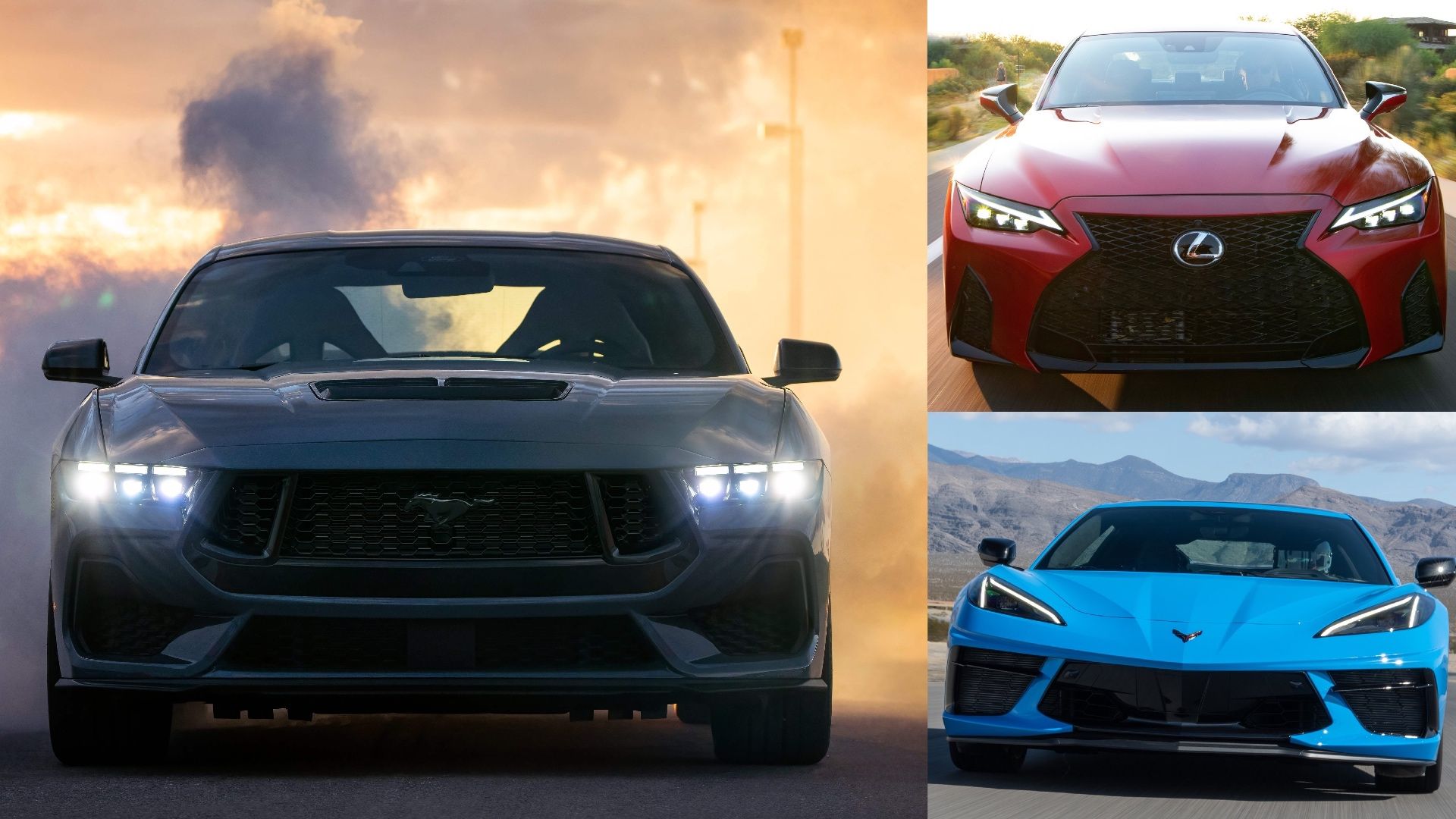
Related
America’s Cheapest V8 Cars Ranked By Reliability
While V8s are disappearing, these 10 cars still offer the fabled engine, along with some much-needed reliability.
This list includes engines that have been used in road-going models. This list is also one part of a three-part series discussing every automaker’s V8 engine.
18 Alfa Romeo 8C Competizione: F136 YC V8
|
Engine |
4.7-liter, naturally aspirated, V8 |
|---|---|
|
Horsepower |
450 hp @ 7,000 rpm |
|
Torque |
354 lb-ft @ 4,750 rpm |
|
0-62 |
4.4 seconds |
The Alfa Romeo 8C was the only Alfa Romeo model to utilize a V8. Not only did it have a V8 engine, but it was a Ferrari-derived V8 engine, specifically the F136 YC V8, that was praised for its exhaust note and afforded the 3,500 lbs two-seater an adequate output by today’s standards. In essence, this was a naturally aspirated V8 featuring dual overhead camshafts, variable valve timing, and a cross-plane crankshaft. The 8C’s main mission was to be pretty, however. It was quite clear from its performance figures that Alfa was told to stay well away from its siblings from Maserati and Ferrari.
17 Aston Martin Vantage: AJ-V8
|
Engine |
4.3-liter, naturally aspirated, V8 |
|---|---|
|
Horsepower |
380 hp @ 7,300 rpm |
|
Torque |
302 lb-ft @ 5,000 rpm |
|
0-62 |
5 seconds |
For the 2005 Aston Martin Vantage, the British automaker employed a 4.3-liter V8, dubbed the AM05. Like many high-performance engines, the AM05 featured a dry sump system, an aluminum alloy block and cylinder heads, and a compression ratio of 11.3:1. Despite all the changes it made to the Jaguar-sourced V8, it just didn’t provide enough power to make the initial run of V8 Vantages feel quick. It was a brisk car, but it lost out badly in any comparison with the evergreen Porsche 911. In 2008, Aston Martin debuted a larger 4.7-liter version referred to as the AM14. This version would feature different components like pressed cylinder liners and, compared to the AM05, more power and torque.

Add CarBuzz to your Google News feed.
16 Audi: 4.2FSI 32V V8
|
Engine |
4.2-liter, naturally aspirated, V8 |
|---|---|
|
Horsepower |
414 hp |
|
Torque |
328 lb-ft @ 3,500 rpm |
|
0-62 |
5.7 seconds |
While Audi is no stranger to the V8 platform, the 4.2FSI 32V V8 engine is royalty. It powered the Audi R8, before the introduction of the V10, and the B7 RS4, which was the first naturally aspirated “RS” model. Although the two models utilize the same engine, the R8 did feature a different dry sump system and a revised camshaft drive system. The athletic V8 consisted of a pairing of a cat aluminum alloy engine block and cylinder heads shrouding a die-forged steel crankshaft, and dual overhead camshafts, among other things.
If you’re looking for affordable supercar thrills, get a first-generation R8 with a gated manual. It’s one of the most exceptional cars ever made.
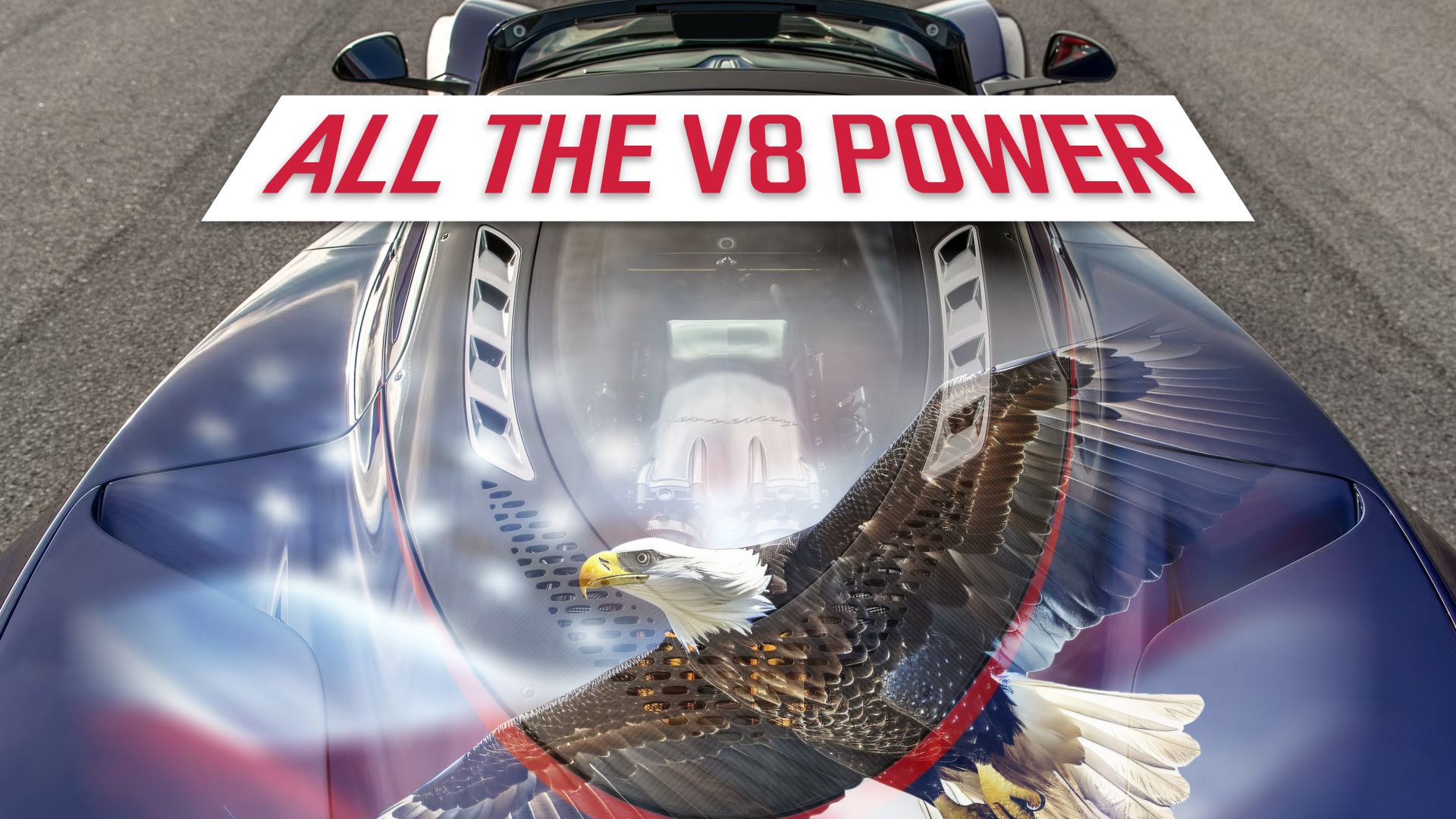
Related
The 10 Most Powerful American-Made V8s Ever
America is synonomous with the V8 engine, but what are the most powerful all-American V8s?
15 BMW: S65 4.0L V8
|
Engine |
4.0-liter, naturally aspirated |
|---|---|
|
Horsepower |
420 hp @ 8,300 rpm |
|
Torque |
295 lb-ft @ 3,900 rpm |
|
0-62 |
4.6 seconds |
Unlike the BMW E36 M3 and the E46 M3, the E9X M3 generation bucked the potent six-cylinder platform. Instead, it sourced power from a 4.0-liter naturally aspirated all-aluminum V8 engine, whose full name was the S65B40. The fourth installment of the M3 moniker was powered by an engine that features dual VANOS, individual throttle bodies, and a mighty plenum that dominated the E90 M2 and E92 M3 engine bay. Despite having more displacement and two extra cylinders, the S65B40 was still lighter than the S50B32 six-cylinder used in the E36 M3 and the S54B32 used in the E46 M3.
The S65B40 was also special in the sense that it wasn’t shared with any other road-legal BMW. It was only used to power the M3, Z4 endurance racers, and the Wiesmann MF4-S.
14 Chevrolet: LS1 V8
|
Engine |
5.7-liter, naturally aspirated, V8 |
|---|---|
|
Horsepower |
345 hp @ 5,600 rpm |
|
Torque |
350 lb-ft @ 4,400 rpm |
|
0-60 |
4.9 seconds |
Chevrolet’s entire LS engine family is steeped in automotive acclaim and praise. The founding member of the LS family debuted in 1997 at the core of the Chevrolet C5 Corvette. It was the successor of the second generation LT1 small block V8 and superseded by the LS6. There were many variations of the LS engine platform that consisted of an all-aluminum or cast-iron configuration. The LS1 was a cast aluminum engine that featured a cast iron crankshaft, a billet steel camshaft, and forged connecting rods. The engine was revised and improved, ultimately increasing power to 350 hp and 365 lb-ft.
13 Dodge/GMC/Ram: 6.2L V8
|
Engine |
6.2-liter, supercharged, V8 |
|---|---|
|
Horsepower |
807 hp |
|
Torque |
707 lb-ft |
|
0-60 |
3.7 seconds |
This supercharged version of the HEMI engine, which debuted in 2015, is referred to as the “Hellcat”. Over the years, this derivative of the HEMI lineup would be used to power a handful of different models across various manufacturer fleets. While it was employed in the Dodge Challenger until the very end of that model, it was also found in the RAM 1500 TRX and GMC Sierra 1500. At the time, this was the most powerful engine produced by Chrysler, but would be surpassed in power output by the Dodge Demon 170’s V8, which debuted a few years later.
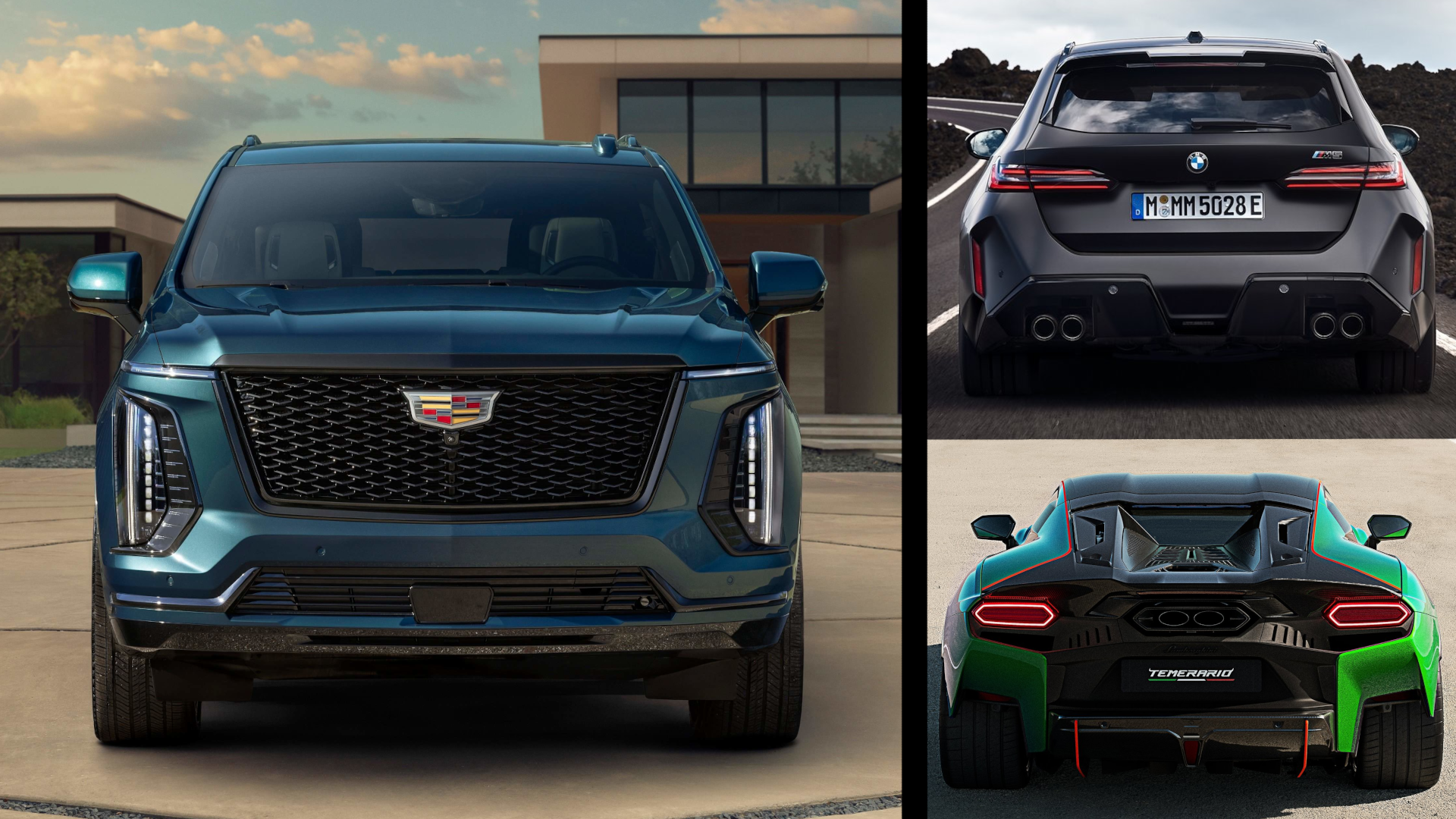
Related
10 Cars And Trucks That Will Keep The V8 Alive Until 2030 (And Beyond)
Worried about the future of V8 power? Here are 10 models securing its survival.
12 Ferrari: F136 V8
|
Engine |
4.5-liter, naturally aspirated, V8 |
|---|---|
|
Horsepower |
597 hp @ 9,000 rpm |
|
Torque |
398 lb-ft @ 6,000 rpm |
|
0-62 |
3 seconds |
The F136 V8 engine was the last naturally aspirated V8 engine used in the Italian automaker’s road cars. It was not only the last naturally aspirated V8 engine in the Ferrari range, but was also the most powerful naturally aspirated engine ever built by Ferrari. In terms of specific output, the F136 engine mustered 133 hp/liter and allowed the 458 Speciale to lap the Fiorano Circuit in 1:23.5 minutes, which is roughly only 5 seconds slower than the SF90 XX Stradale, despite the XX model being more powerful, newer and more advanced.
11 Ford: Coyote V8
|
Engine |
5.0-liter, naturally aspirated, V8 |
|---|---|
|
Horsepower |
412 hp @ 6,500 rpm |
|
Torque |
390 lb-ft @ 4,250 rpm |
|
0-60 |
4.6 seconds |
The Coyote V8 debuted in 2010 and was an evolution of Ford’s Modular engine platform. It shared the bore and stroke of the 4.6L engine it superseded but was distinguished by its 4-valve DOHC cylinder heads, revised intake port characteristics, Ford’s Twin Independent Variable Cam Timing system, reinforcements to the casting, and a re-positioned intake plenum. When it debuted, the Coyote V8 would power both the 2011 Mustang GT and the 2011 Ford F-150 and is still used, although in a slightly different form, today.
10 Hennessey Performance: “Fury” V8
|
Engine |
6.6-liter, twin-turbocharged, V8 |
|---|---|
|
Horsepower |
1,817 hp @ 8,000 rpm |
|
Torque |
1,193 lb-ft @ 5,000 rpm |
|
0-60 |
2.5 seconds |
Aptly named “Fury”, Hennessey Performance’s 6.6-liter V8 paired with two 76 mm precision ball bearing turbochargers has been employed in every variation of the Venom F5 range, and each has been blessed with an almost disturbing amount of power and torque. Commanding 277 hp/liter, the Fury engine is one of the most powerful engines and one of the most power-dense engines available in the modern age. Fun fact, it is based on the LS V8 engine.
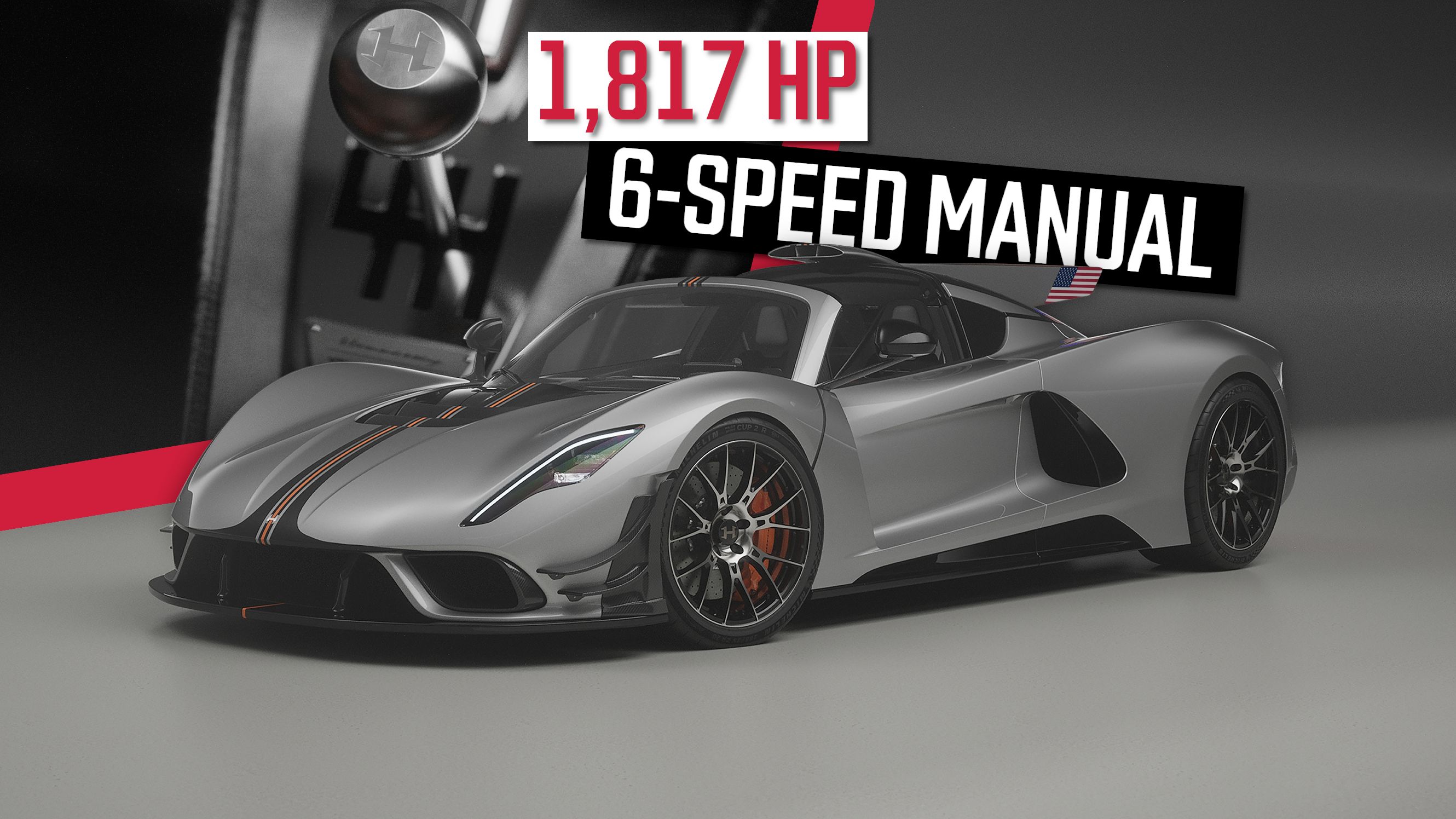
Related
Hennessey Venom F5-M Is The World’s Most Powerful Manual-Equipped Car Ever
How do you make a 1,817-hp hypercar more visceral, more engaging, more thrilling to drive? You stick a six-speed gated manual in it, of course.
9 Jaguar Land Rover: Supercharged 5.0L V8
|
Engine |
5.0-liter, supercharged, V8 |
|---|---|
|
Horsepower |
567 hp @ 6,500 rpm |
|
Torque |
516 lb-ft @ 3,500 rpm |
|
0-60 |
3.7 seconds |
The 5.0-liter V8 platform has been used in Jaguar and Land Rover’s ranks for years. Most notably, the F-Pace SVR and Defender. These models utilize a variation of the AJ-V8 Gen III, which is similar to the Aston Martin Vantage’s V8 engine. It debuted in 2009 and featured a brand-new engine block, spray-guided direct injection, exhaust camshaft timing, and variable intake timing. The supercharged derivatives, like those used in the models mentioned previously, featured a Twin Vortices Series supercharger. Both models’ 2025 offerings still employ the supercharged 5.0L power unit.
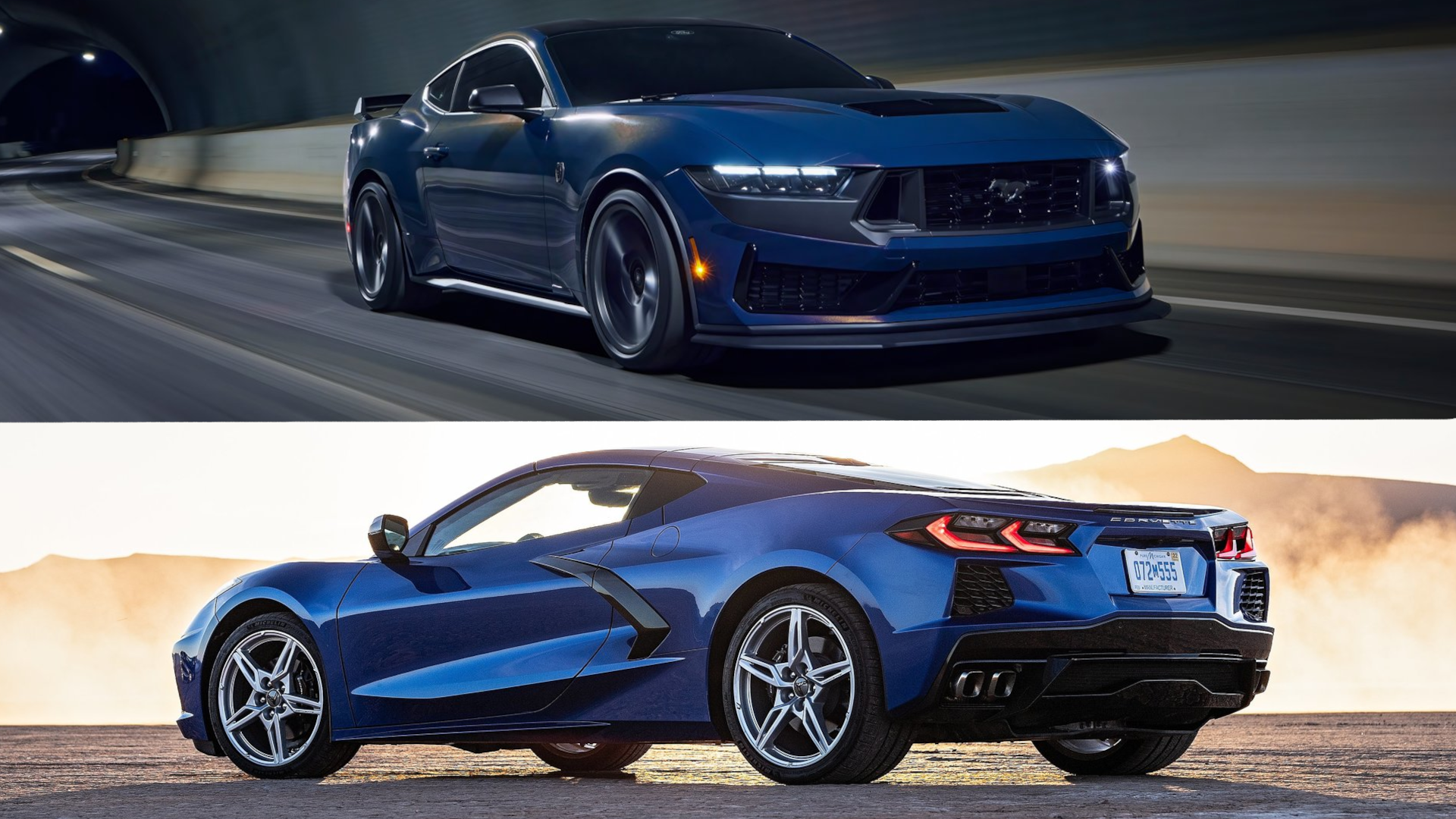
Related
There Are Only Two Naturally Aspirated V8 Sports Cars Left In America
This particular segment has all but vanished.
8 Koenigsegg ONE:1 V8
|
Engine |
5.0-liter, twin-turbocharged, V8 |
|---|---|
|
Horsepower |
1,341 hp @ 7,500 rpm |
|
Torque |
1,011 hp @ 6,000 rpm |
|
0-60 |
2.5 seconds |
The Koenigsegg ONE:1 is iconic and the V8, which it relies on for its four-figure power output, is even more so. The ONE:1 was the earliest Swedish MegaCar to feature the seemingly omnipresent V8 engine. Like the Jesko that would come after, this V8 consists of an aluminum body operating at a compression ratio of 9.0:1 and allowing the sultry hypercar to blister from a standstill to 248 mph in 20 seconds.
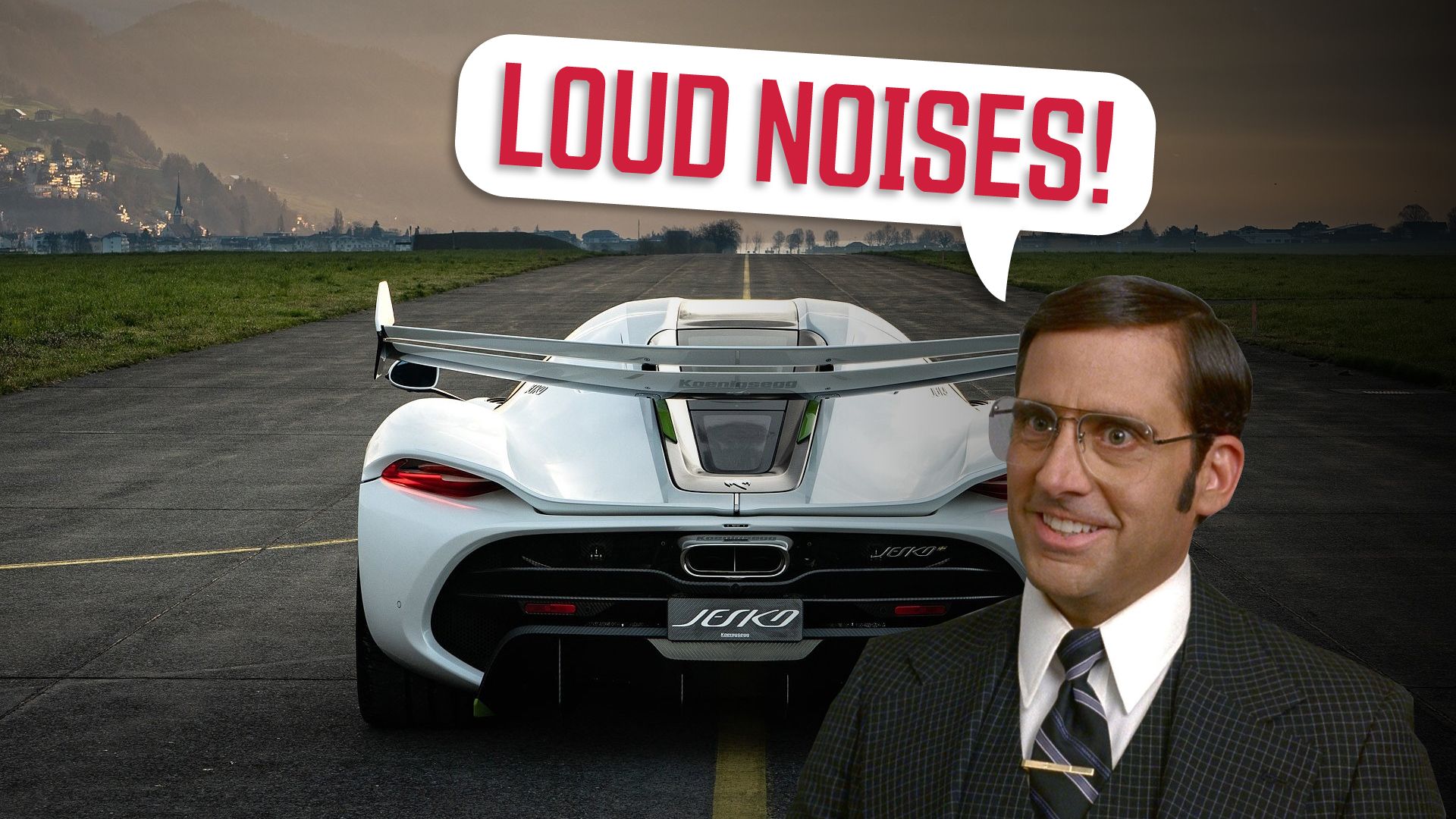
Related
The Best Sounding V8 Engines You Can Buy In 2024
If you’re looking for a thunderous V8, you came to the right place.
7 Lamborghini Jalpa V8
|
Engine |
3.5-liter, naturally aspirated, V8 |
|---|---|
|
Horsepower |
255 hp @ 7,000 rpm |
|
Torque |
225 lb-ft @ 4,000 rpm |
|
0-60 |
6 seconds |
The Lamborghini Jalpa was one of the earliest V8-powered products from the high-end Italian manufacturer and was the last model with a V8 engine before the introduction of the Urus more than 40 years after the former’s debut. It was a transverse 3.5-liter unit that propelled a 3,329-pound two-seater from one end of a quarter mile strip to the other in 15.4 seconds, according to Lamborghini’s claims. Only 410 examples of the Jalpa were produced from 1981 to 1988.
6 Lotus Esprit V8
|
Engine |
3.5-liter, twin-turbocharged, V8 |
|---|---|
|
Horsepower |
350 hp @ 6,500 rpm |
|
Torque |
295 lb-ft @ 4,250 rpm |
|
0-60 |
4.4 seconds |
The Lotus Esprit wasn’t initially offered with a V8 engine. In fact, for most of the model’s history, it was powered by a four-cylinder. It was only in 1996 that the V8-powered derivative debuted. The eight-cylinder power unit was referred to as the Type 918 and originally could produce 500 hp but was configured to output less to avoid transmission damage. That’s hardly surprising as Lotus was low on money and had to borrow a gearbox from Renault.
The Esprit V8 was produced between 1996 and 2004 and split between “SE” and “GT” variants.
5 Maserati 5000GT V8
|
Engine |
4.9-liter, naturally aspirated, V8 |
|---|---|
|
Horsepower |
325 hp @ 5,500 rpm |
|
Torque |
Undisclosed |
|
0-60 |
Undisclosed |
Maserati’s first V8-powered sedan was the 5000GT. It was produced between 1959 and 1965, exclusively relying on a front-engine V8 paired with four twin-choke IDM Weber carburetors, and four overhead camshafts, and sent all of its power to the rear wheels. There were two variations of the V8 engine, although both maintained the 4.9-liter displacement.
4 McLaren M838T
|
Engine |
3.8-liter, twin-turbocharged, V8 |
|---|---|
|
Horsepower |
616 bhp @ 7,000 rpm |
|
Torque |
443 lb-ft @ 3,000 rpm |
|
0-62 |
3.1 seconds |
The M838T was the engine that was designed and built for the McLaren MP4-12C. It was the successor to the M840T 4.0L V8 and was distinguished by its MHI twin-turbochargers and flat-plane crankshaft. It was developed in collaboration with Ricardo PLC, which is the same company that makes the Aston Martin Valkyrie’s transmission. The M838T would power several models, including the GT3 variant of the 12C, the 650S, and the 675LT. It was also used as the basis of the McLaren P1’s M838TQ engine and the 2020 McLaren 620R’s M838TE engines.
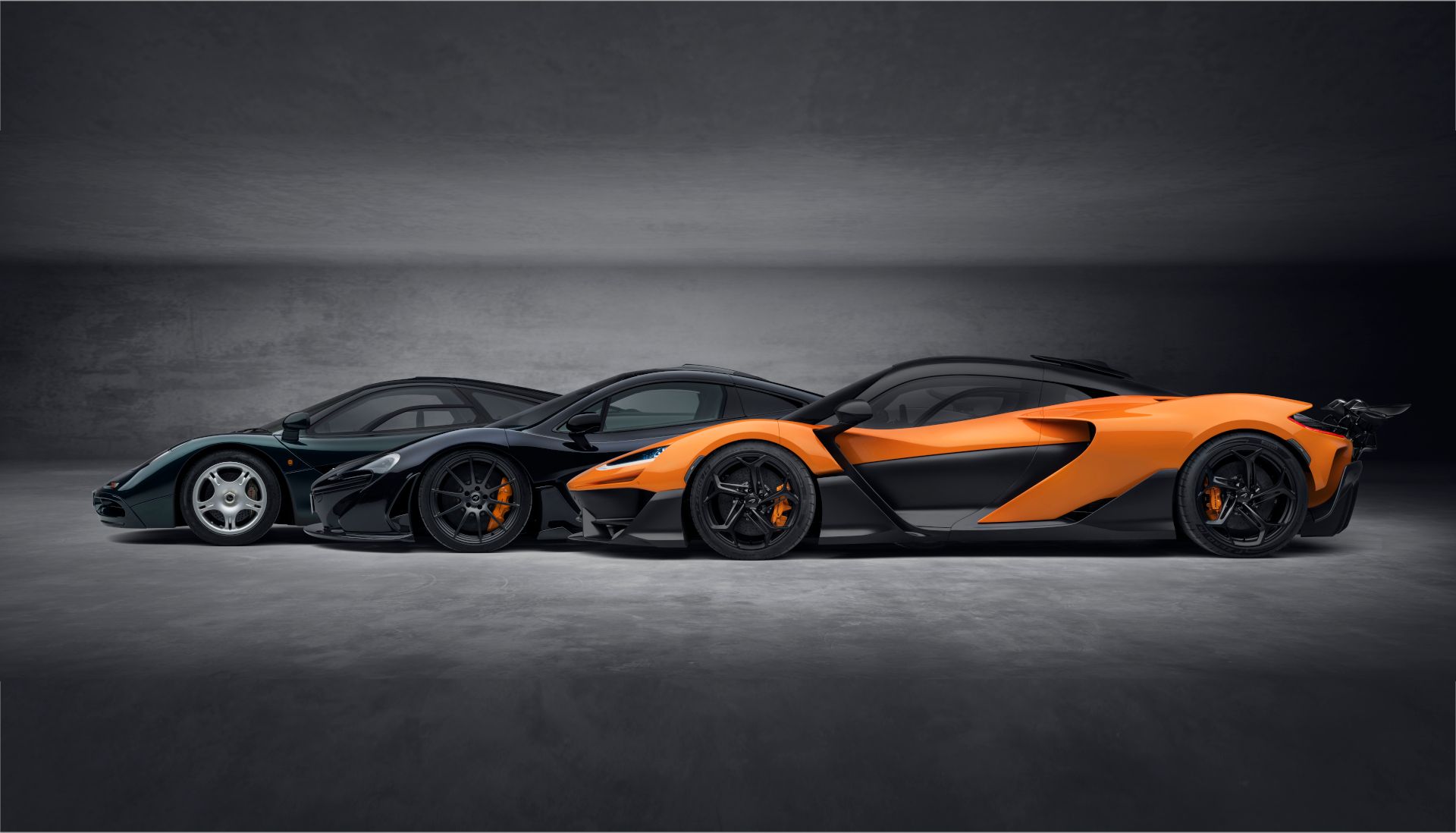
Related
How McLaren’s Most Power-Dense V8 Engine Ever Stacks Up Against Hypercar Royalty
McLaren’s P1 successor, the W1, is powered by the most power-dense V8 the brand has ever created. How does it compare to other modern hypercars?
3 Mercedes-AMG M156 V8
|
Engine |
6.2-liter, naturally aspirated, V8 |
|---|---|
|
Horsepower |
451 bhp @ 6,800 rpm |
|
Torque |
442 lb-ft @ 5,000 rpm |
|
0-60 |
3.9 seconds |
This was the first engine designed and developed solely by the Mercedes-AMG wing after the separation from the main Mercedes-Benz division. It is an iconic engine, famously known for being the roaring heart of models like the AMG W204 C63. Compared to the engines produced by the standard Mercedes-Benz arm, the M156’s components were unique and although it had a displacement of 6.2 liters, it was still marketed as “63”. In the C63 configuration, the M156 was detuned compared to other AMG models, but it still offered more than enough power to contend with its rivals.
2 Nissan VK Series
|
Engine |
4.5-liter, naturally aspirated, V8 |
|---|---|
|
Horsepower |
305 hp – 650 hp |
|
Torque |
385 lb-ft – 485 lb-ft |
|
0-60 |
Model specific |
The VK engine family was a series of V8 engines developed by Yokohama for use in various Nissan models. Some of the roadgoing applications of this engine include the Nissan President and Nissan Fuga. It was also used in other manufacturer models like the Infiniti Q45, which used larger versions of the Vk engine. However, the most notable applications of this engine are in motorsport, specifically Super GT.
1 Porsche 918 Spyder
|
Engine |
4.6-liter, naturally aspirated, hybrid, V8 |
|---|---|
|
Horsepower |
887 hp @ 8,600 rpm |
|
Torque |
944 lb-ft @ 5,000 rpm |
|
0-60 |
2.6 seconds |
At the time of its debut, the Porsche 918 Spyder was the pinnacle of the acclaimed automaker’s performance standards and engineering. A key aspect of the sultry Holy Trinity member’s design was the V8 engine, assisted by two electric motors to propel the 918 Spyder from a standstill to 186 mph in 22 seconds. Years after its debut, the 918 Spyder and its power-laden drivetrain still stand shoulder-to-shoulder with many modern V8 engines that have since debuted.
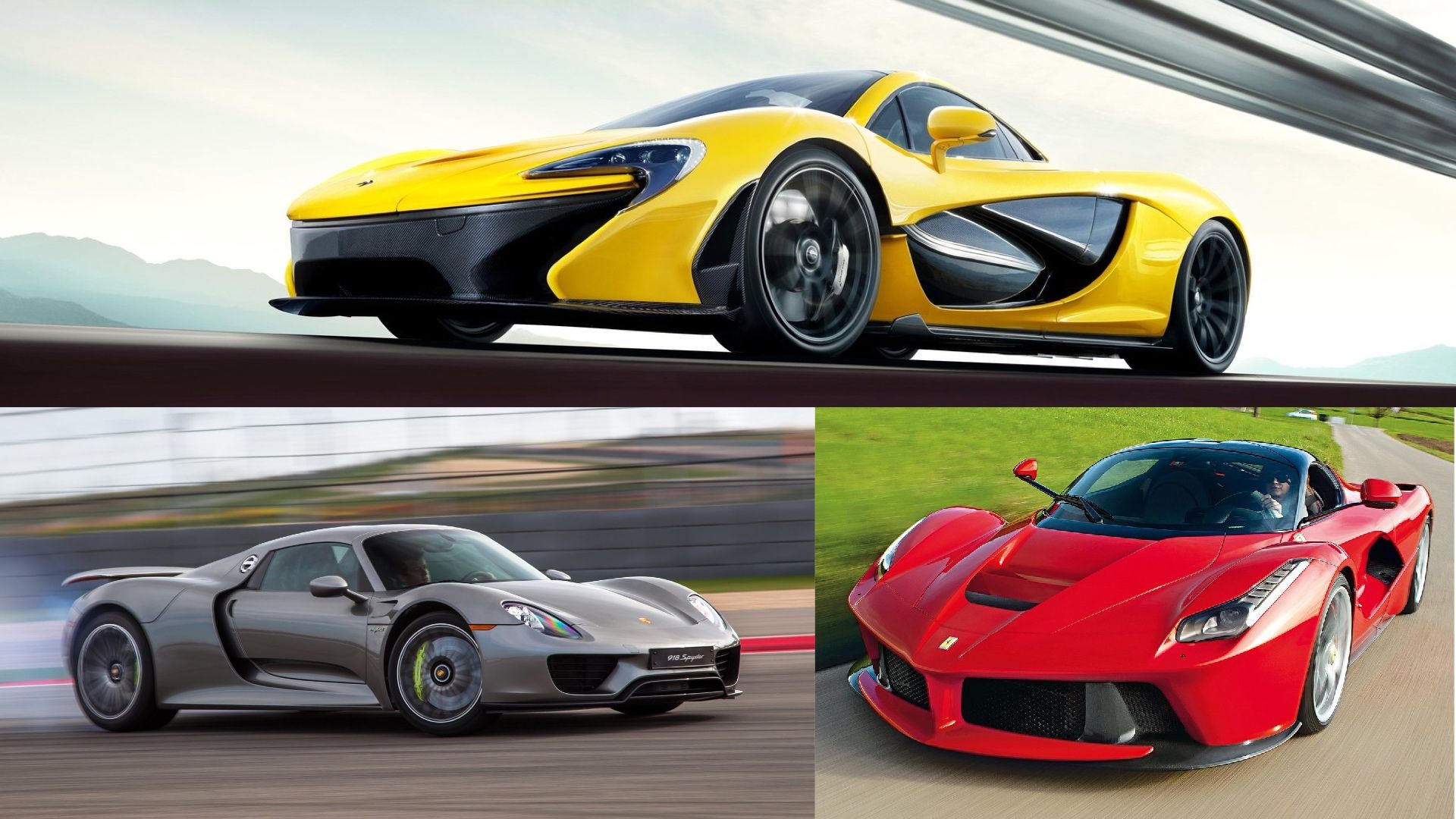
Related
How The Holy Trinity Stack Up Against Modern Supercars
The Holy Trinity consisting of the 918 Spyder, P1, and the LaFerrari, represented the pinnacle of the automotive world. How do they compare today?






